The Himalayan country of Bhutan lies between India and the autonomous region in southern China known as Tibet. This small, Buddhist nation is relatively unknown to most in the Western world. That said, it is a giant when it comes to history, culture, gastronomy, charm, and adventure. In fact, it’s packed with so many things to do that even western Bhutan is full of incredible things to see and eat. Keep in mind that this is a road trip guide. For detailed guides to each city along the route, please check out my Bhutan city guides!

I traveled to Bhutan in early March of 2020, just as the COVID-19 pandemic began to truly grip the world. The pandemic had a big impact on my trip, as I arrived wearing a mask and armed with sanitation supplies. Later, my entire itinerary had to be re-written on the fly after the country’s first positive COVID case. Then, I had to cut my trip short by four days as international borders around the world closed due to the virulent threat.
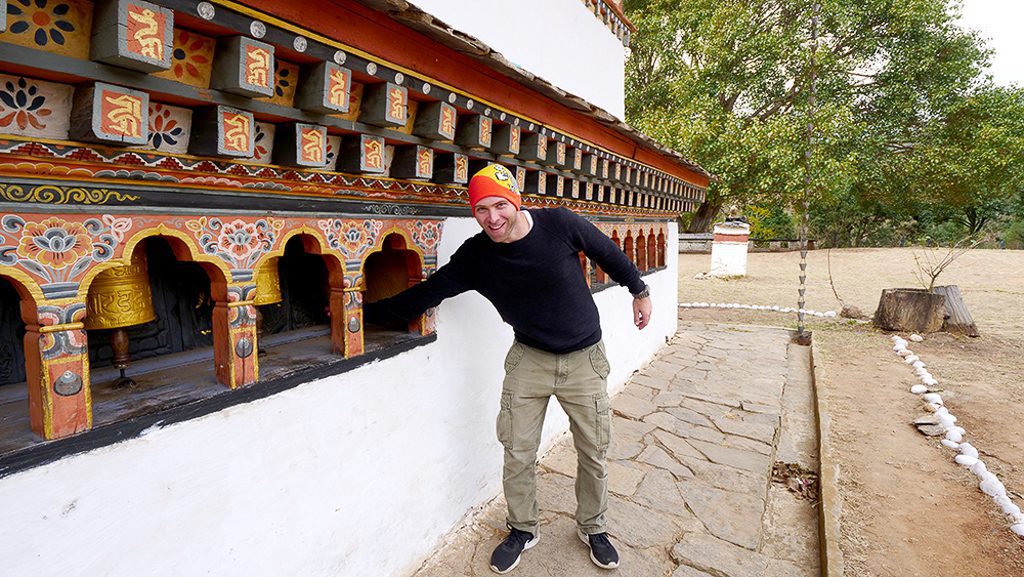
During my eight days in Bhutan, I teamed up with my friends Tsheten and Nidup from MyBhutan to explore the western reaches of the country. It included an epic road trip that took me from Paro to the cities of Punakha and Thimphu, as well as the picturesque Haa Valley. And while the cities are certainly full of amazing things to do, there are some gems along the road in-between them as well! This is my Western Bhutan Road Trip Guide: What to See and Eat!
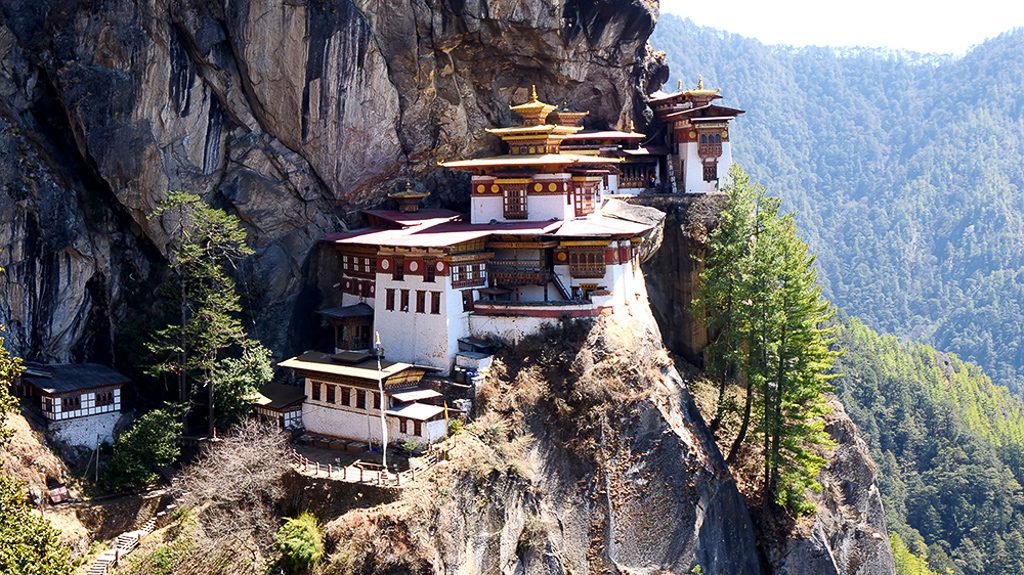
When you arrive in Bhutan by plane, you’ll land in Paro, the country’s only city with an international airport. After arriving, I decided to first drive east to Punakha. Then, I doubled back to further explore Thimphu and Haa Valley before wrapping up in Paro. Paro may look sparse upon first glance, but there are several points of interest in and around the city, including Rinpung Dzong fortress, the National Museum of Bhutan, and several Buddhist monasteries. The most famous monastery in Bhutan, Tiger’s Nest, clings to the side of a cliff north of town.

There is only one main highway in Bhutan that links all of the main cities and points of interest. There are a couple of varied points of interest along the roughly 50-kilometer route between Paro and Thimphu. The route is made up of the Paro-Thimphu Highway and the Phuntsholing-Thimphu Highway. Both will remind you why traveling off the beaten path is the best way to explore a new country!
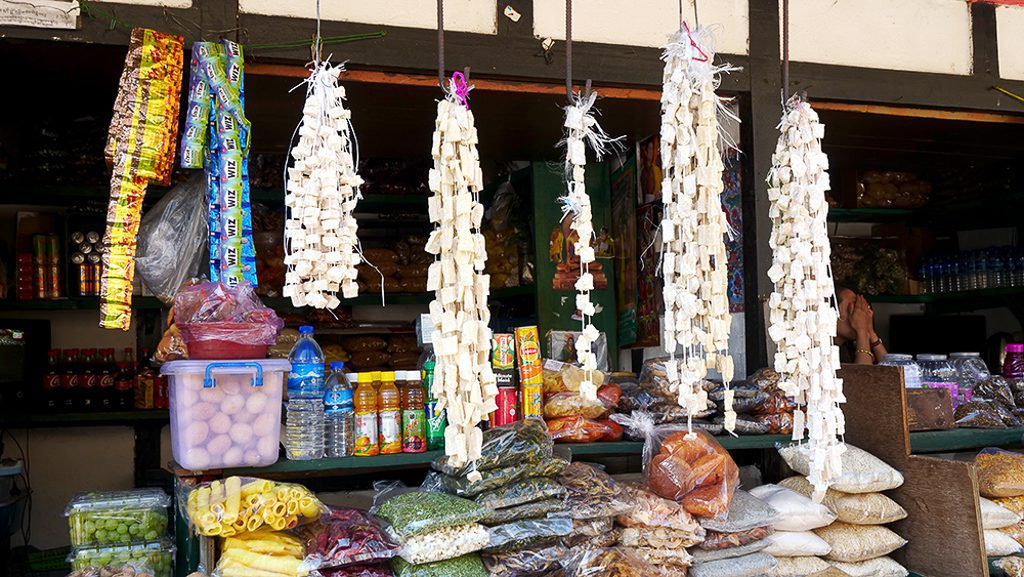
If you didn’t know beforehand, you’ll quickly learn upon arriving that cheese is a major part of the local diet. It’s found in the national dish, ema dashti (a mix of chilies, yak cheese, and sometimes processed cheese), and a potato-and-chili dish called kewa dashti, among others. Yak cheese is also eaten dehydrated. In that form, it’s known as chogo.
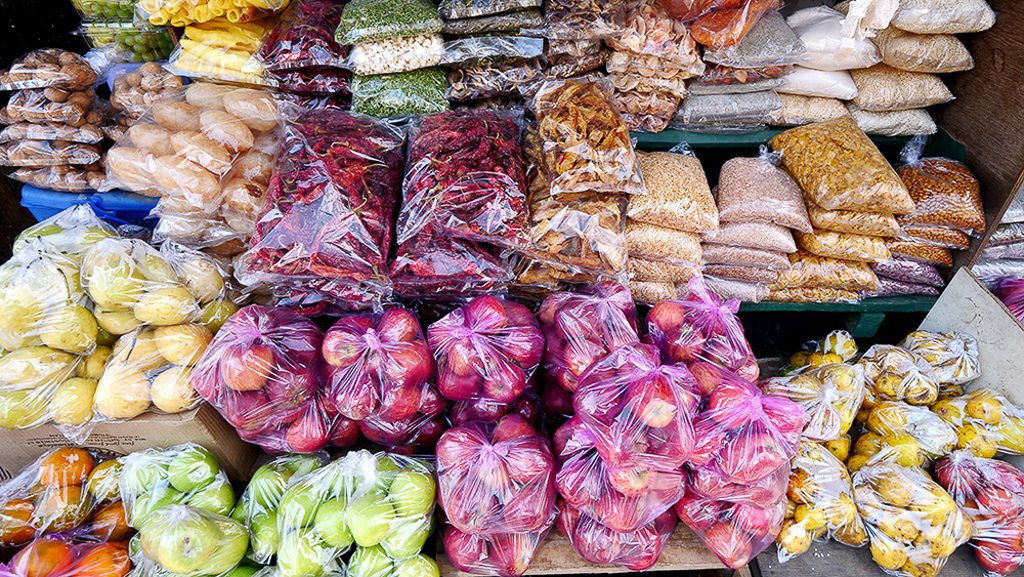
Between Paro and Thimphu, there is a roadside stand that sells water, juice, fruit, local spices, tea leaves, dried chilies, and roasted rice. Hanging in bunches from its wooden eaves are white, rock-like chunks of chogo, strung together with twine.

Chogo is a popular snack in Bhutan, but it may take Westerners some time to get used to it. I don’t recommend biting down on it, as that’s a very good way to lose or crack a tooth. Instead, pop a chogo nugget into your mouth and suck on it, letting your saliva soak into it and break it down a bit. It takes a while, but the flavor is quite interesting and enjoyable, so I highly recommend it!
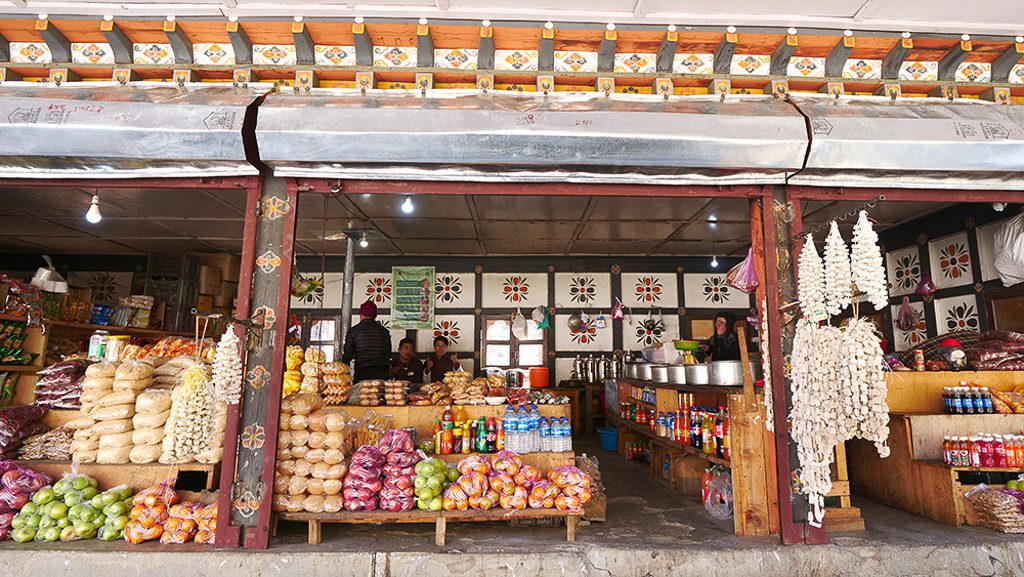
Of course, you will come across numerous stands and shops along the road between Paro and Thimphu. There’s a small hut-like convenience store/restaurant near a river that is popular among locals. They sell drinks and snacks, including chogo, but the main reason to stop there is to try their exotic meat dishes.

Here, you can try everything from yak skin to tripe to pork sausage to beef lungs. In other words, it’s a carnivore’s dream—especially a carnivore who loves trying unique types of meat! I grew up eating and loving organ meat, so this meal was right up my alley. Everything was also spicy, which in my opinion, makes everything better.
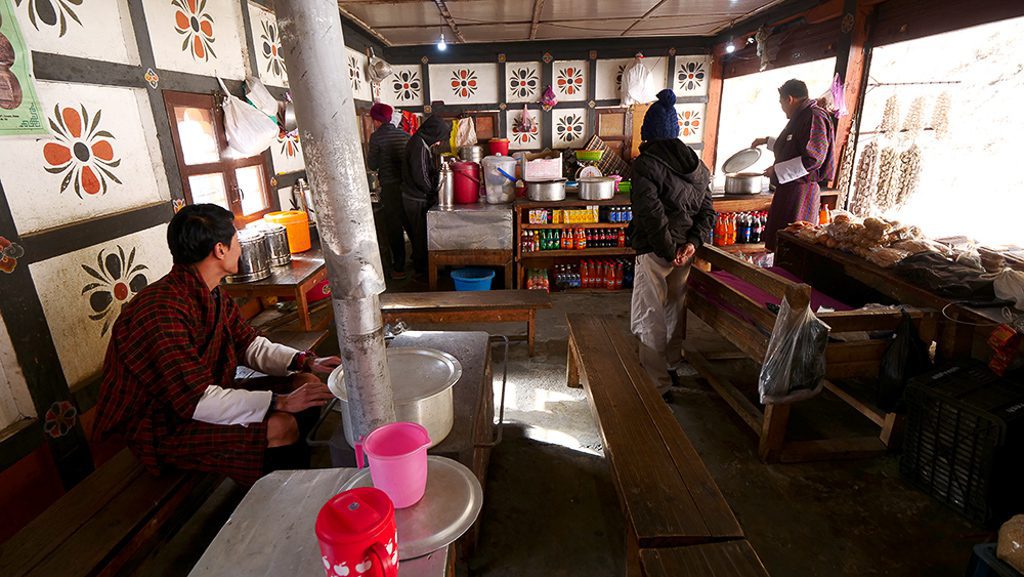
I began my meal with some ngaja, or milk tea. You can also try suja, which is traditional butter tea. It’s a little too strong and salty for my tastes, so I stuck with the ngaja.

The pork blood sausage was one of the highlights of my meal. It reminded me of morcilla, which is a Latin-American blood sausage. It was incredibly juicy and full of bloody, iron-rich flavor. I also loved the soft and spicy beef lungs, which reminded me somewhat of kidney meat. They were bursting with spices that completely numb your lips and tongue. Try them with the provided chili sauce, which is called ezay. This variety isn’t too hot, but there are others in Bhutan that will set your entire mouth on fire if you’re not careful!
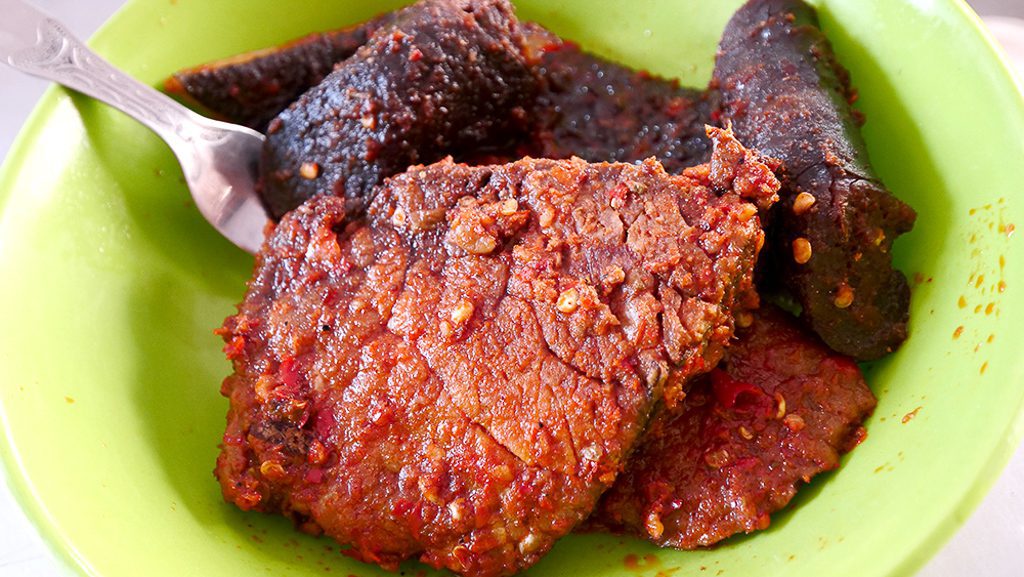
I also tried some tripe, or stomach. Like the rest of the meal, it was extremely tasty, but it was a little tough, kind of like an overcooked flank steak. One side of it was fleshy, while the other was more fatty and gelatinous. Finish your meal with a boiled rice porridge with paneer and chili powder. It sounds like an odd combination, but it’s actually quite tasty!
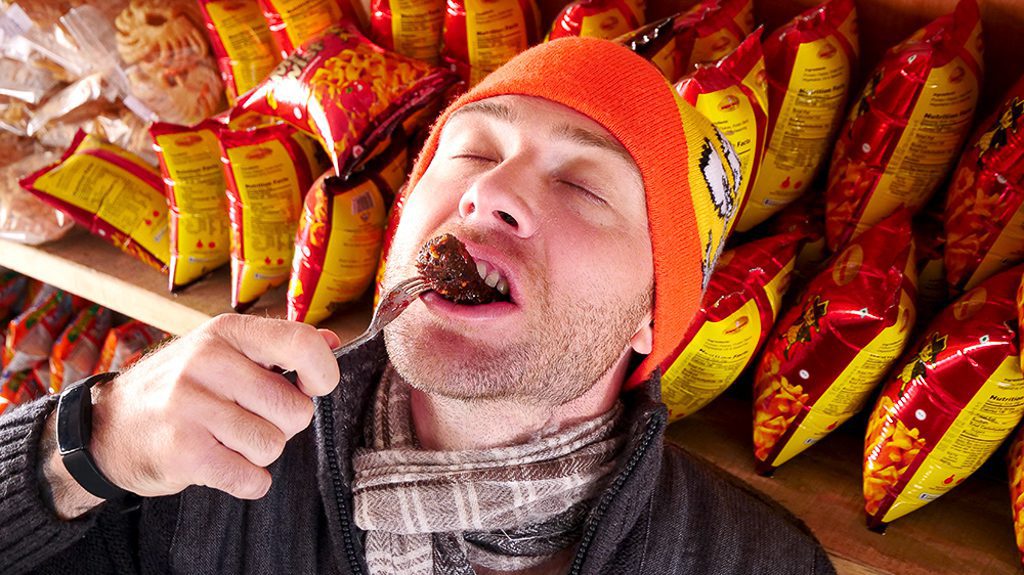
Overall, this meal is one of the tastiest I had in Western Bhutan and easily makes my list of what to see and eat on a road trip between Paro and Thimphu!

As Bhutan’s capital and largest city, Thimphu deserves a bit of extra time to fully explore. By most standards, it would be considered a small town, but in Bhutan, it’s the closest thing to a metropolis, with just over 114,000 residents. It’s a cultural hub and is also the country’s political and economic center. It only takes about fifteen minutes to cross the town by car, but there’s a lot to do in that small area.
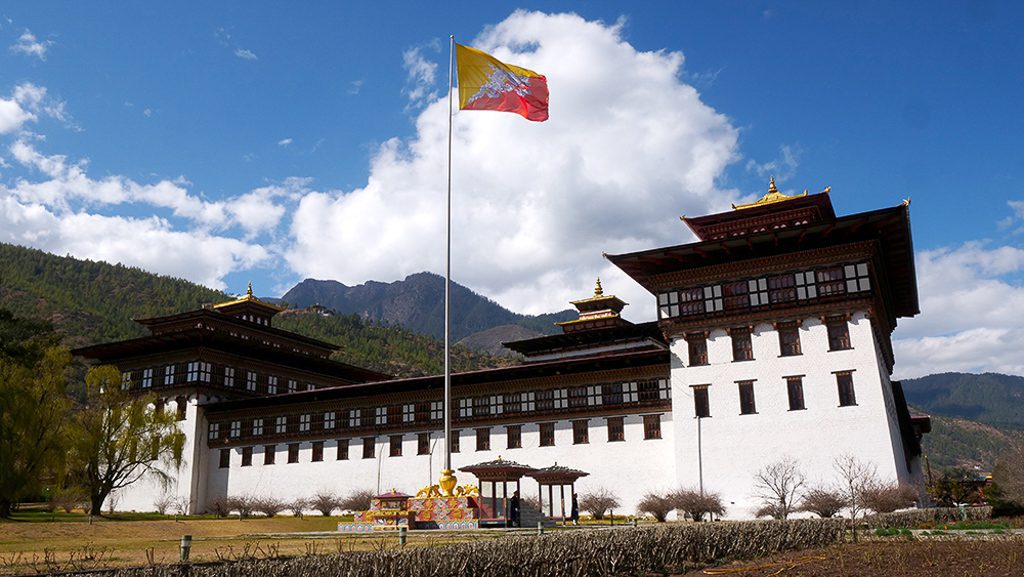
If you have a few days to fully experience Thimphu, I highly recommend checking out some of my personal favorite sites. They include the Buddha Dordenma, which is the largest sitting Buddha statue on Earth; Simply Bhutan museum; the Taschichoo Dzong fortress; and the Changangkha Lhakhang and Chagri Dorheden Monasteries. Stop by Thakali Kitchen, Kalden Restaurant, and Typical Bhutanese Restro & Bar for tasty Bhutanese fare, and check out the Royal Takin Preserve if you’re an animal lover!

Your easterly road trip toward Punakha will have you follow the winding Thimphu-Punakha and Thimphu-Wangdue Phodrang Highways. This route is even more picturesque than the one between Paro and Thimphu, as there is a lot more lush greenery along the side of the road.

The combination of thick forests and high mountains gives off the feel of a lot of alpine countries I’ve visited in Europe. The air smells clean and crisp, and there are quite a few notable spots along this isolated stretch of highway. Continue your western Bhutan road trip, as there’s a lot more to see and eat here!

As you continue east through the mountains between Thimphu and Punakha, you’ll come across one of Bhutan’s most well-known attractions. The Druk Wangyal Khang Zhang Chortens is a memorial in Dochula Pass, which lies about 10,200 feet above sea level.
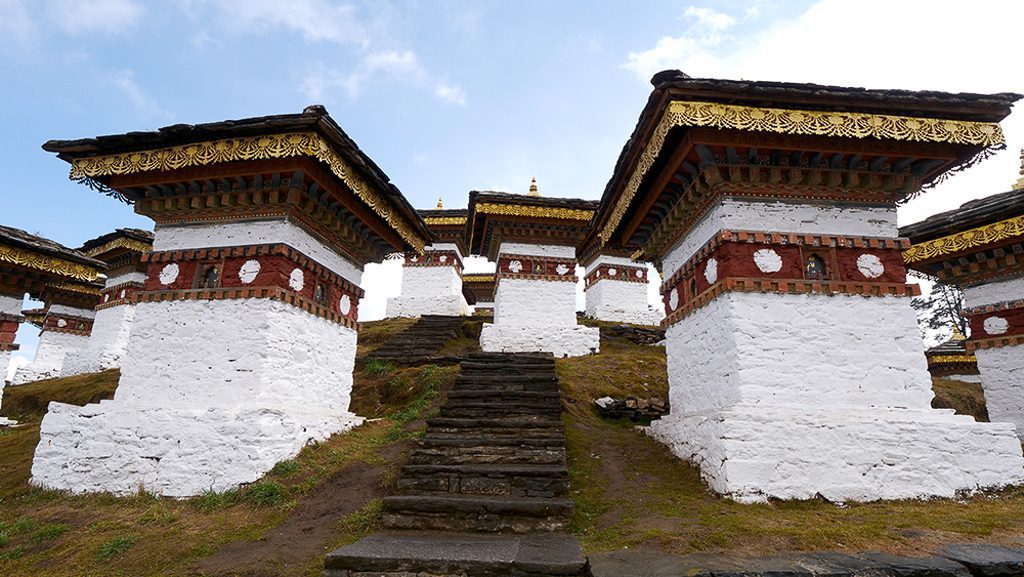
These chortens date back to 2004. They commemorate the lives of Bhutanese soldiers who died in combat against insurgents from the neighboring Indian state of Assam in 2003.

The memorial is made up of 108 chortens, or stupas, which are scattered around a hillside in the pass. It’s significant that there are 108 chortens, as that number is considered sacred in the Buddhist religion.
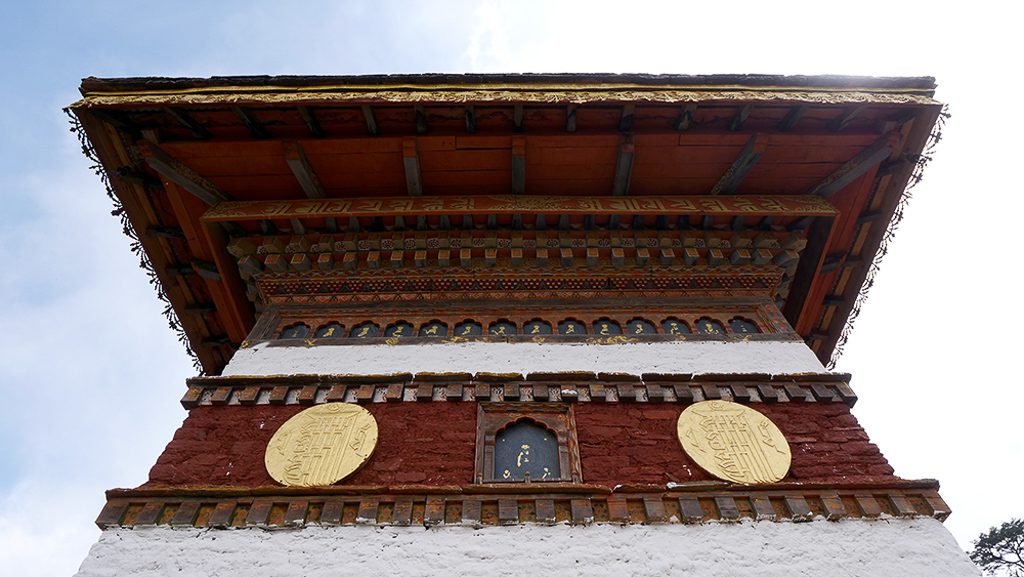
The largest chorten stands at the very top of the hill, but each of them is quite beautiful, with colorful designs and script on their exteriors. Each chorten also contains an idol of the Buddha set inside it.

On clear days, I was told that it’s possible to see the surrounding mountains from the chortens. However, I visited on a gray, overcast day, so while I didn’t get to enjoy any breathtaking views, the beauty of the chortens was more than enough for me! It’s an absolute must on any western Bhutan road trip and should be on any list of things to see, do, and eat!

If you made the drive from Paro to Punakha all in one go like I did, you’ll likely be hungry by the time you reach your destination. Just outside of Punakha is a popular lunch spot called Menchuna Restaurant, which is a perfect eatery to try some traditional Bhutanese cuisine. It even looks traditional, as there’s a stupa right outside and rustic, wooden interiors.
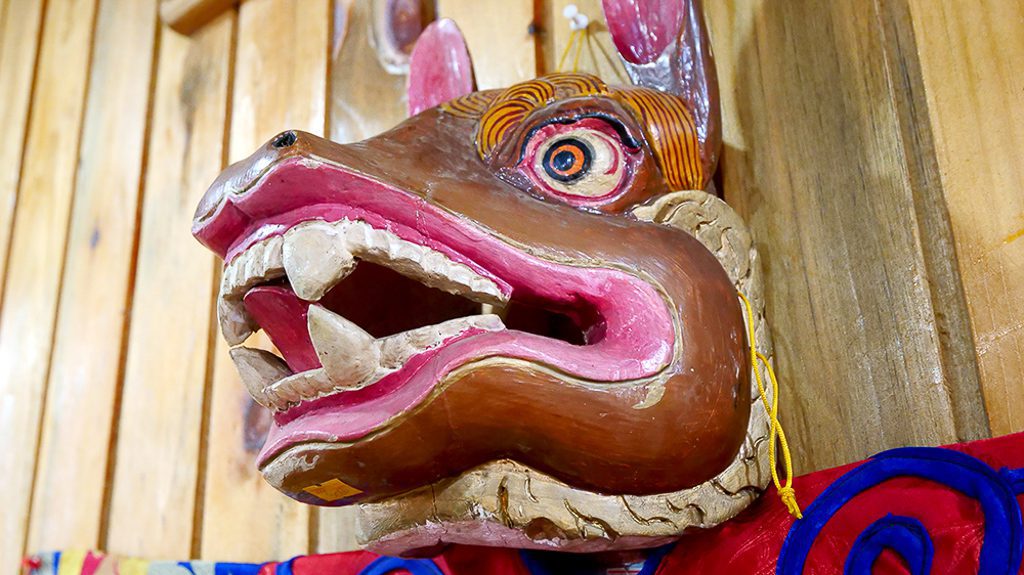
The restaurant oozes Bhutanese culture, bolstered by the traditional embroidery and masks adorning its walls. There’s also a souvenir shop inside if you’re interested in keepsakes to take home with you, as well as a buffet. I recommend going a la carte here and trying traditional dishes like dried fish with chilies, dried pork with radish and more chilies, squash with chilies, long beans, red rice, and ezay. There’s also a really fantastic chicken at the buffet!
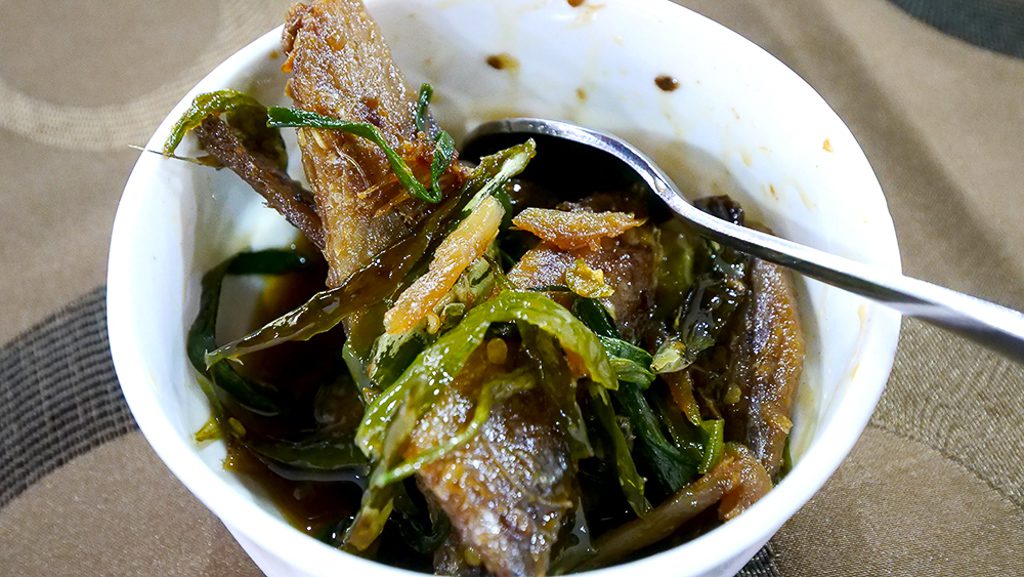
The red rice is a staple in Bhutan and is very unique. Mix some ezay into it, but be careful—it’s potent and had my tongue feeling like it had burst into flames! Speaking of spicy food, the squash with chilies had a real kick of heat to it, and the texture was meaty and substantive. I also could not get enough of the dried pork, which was crispy on the outside and fatty throughout.
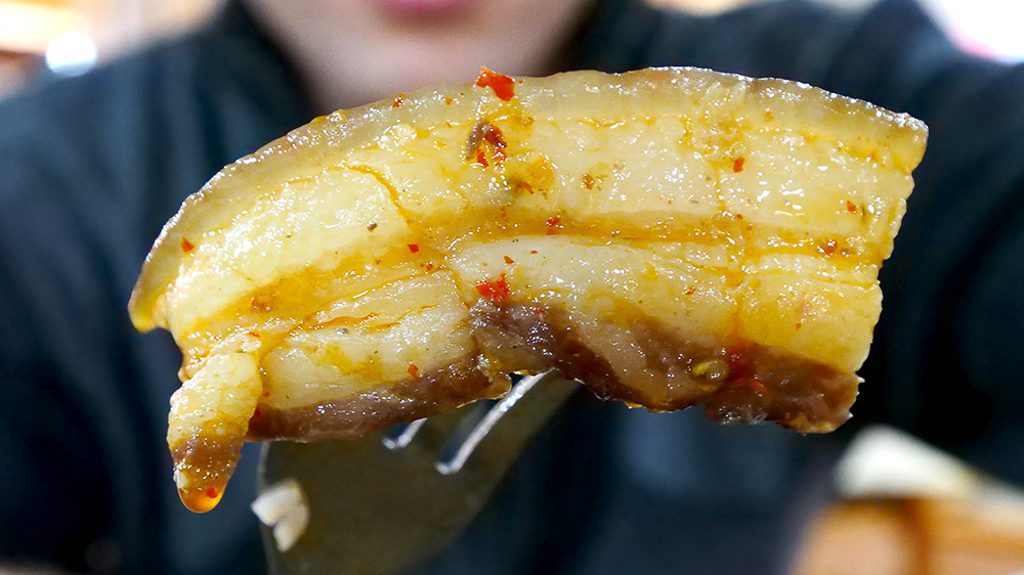
I love fish, but I’m usually wary of it because of a past experience where a bone got lodged in my throat. So I recommend eating the dried fish slowly and carefully, as it is very bony but mouthwateringly good. Don’t forget the long beans with ezay. The two flavors together are out of this world!
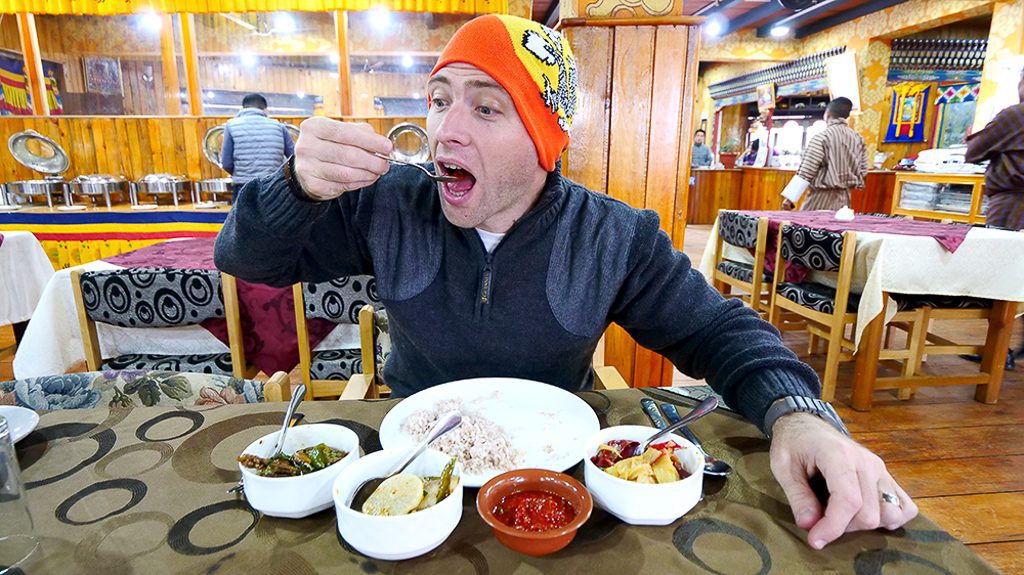
I also tried a delicious dish that I was told is only made during special occasions. It consists of rice, coriander, egg, and chilies, which was good but made even better with a bit of ezay. You’re supposed to enjoy it with suja, or butter tea, but as I mentioned earlier, it’s not my favorite. But overall, it’s a fantastic meal to have in Western Bhutan and one of the best things to see and eat on the way to Punakha!
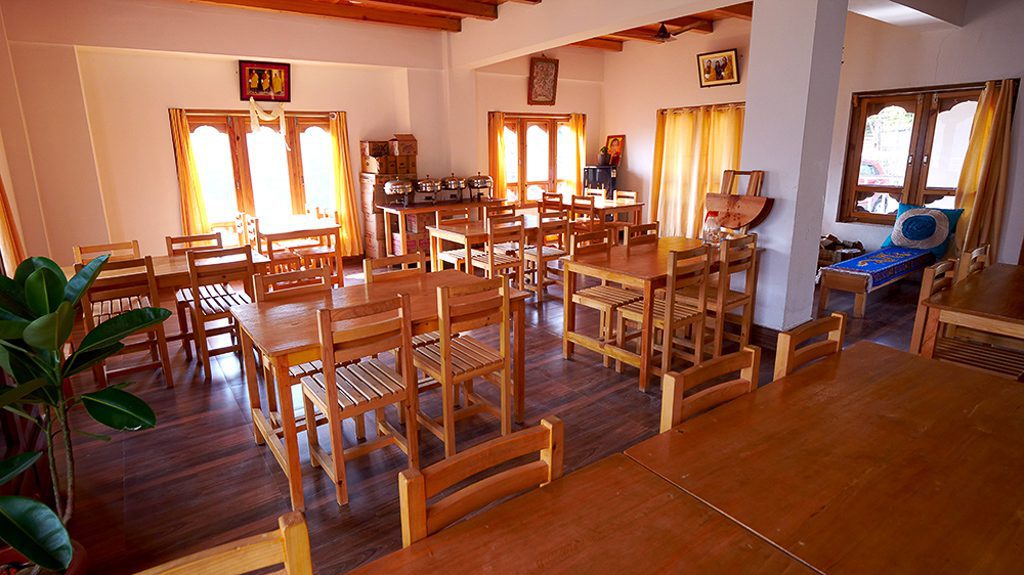
In the misty mountains about 20 minutes outside of Punakha, you’ll come across a restaurant called Drukdruel Lodging & Food. It’s the perfect place to hit up for breakfast as you’re leaving Punakha and heading back toward Thimphu. This traditional eatery offers lots of yummy dishes, so it’s best to stop by when you’re hungry!
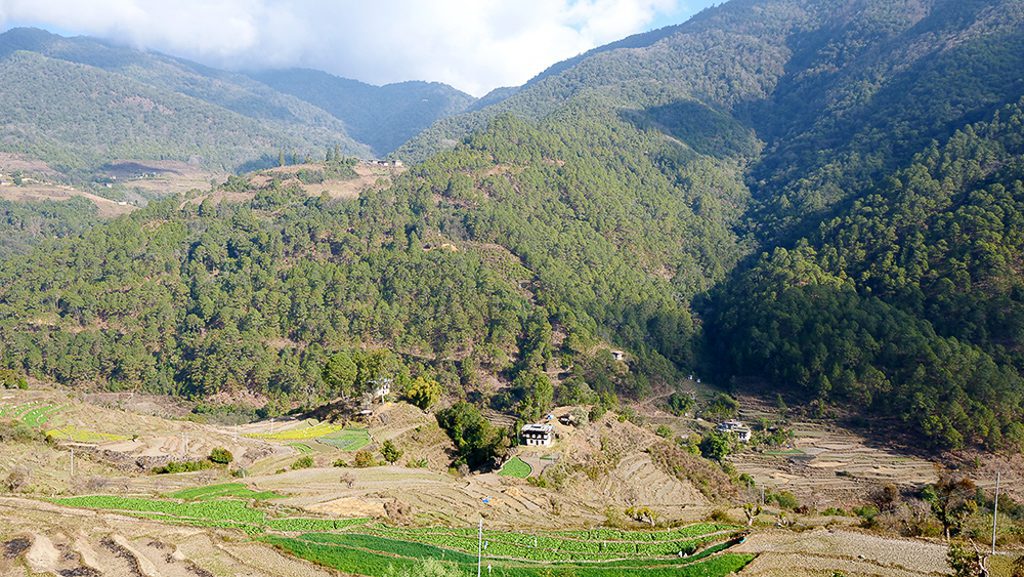
The restaurant itself is gorgeous. It’s a cafeteria-style restaurant that displays locally-made purses, bags, and whiskeys. It also boasts stunning views over vibrant, green rice paddy fields. With the mountains in the background, it’s an amazing spot to enjoy a meal.
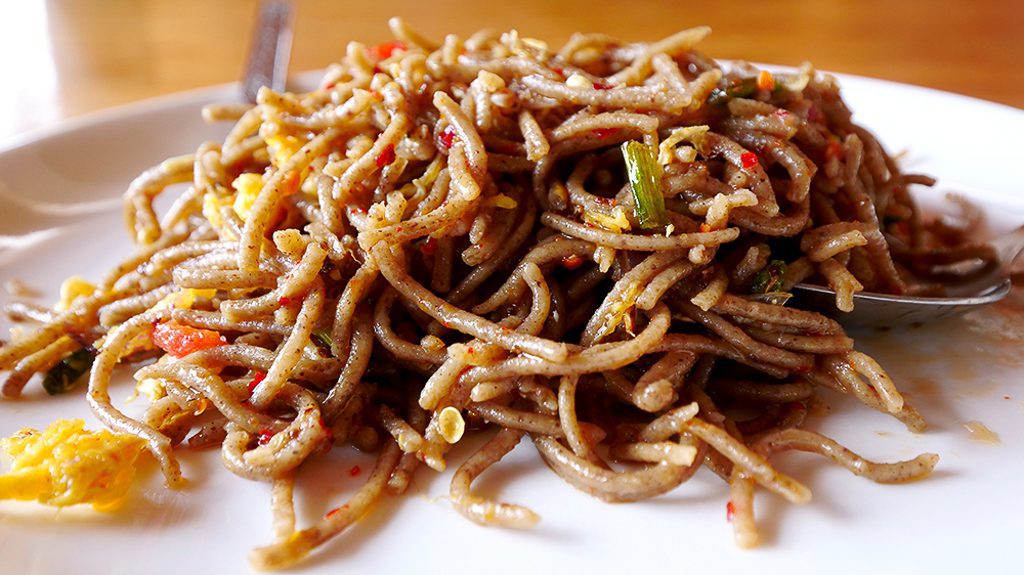
I recommend trying the shakam dashti, which is a dried beef dish that contains chilies and cheese. On the side, have some puta, or a buckwheat noodle dish from central Bhutan. Have some ngaja while you wait!
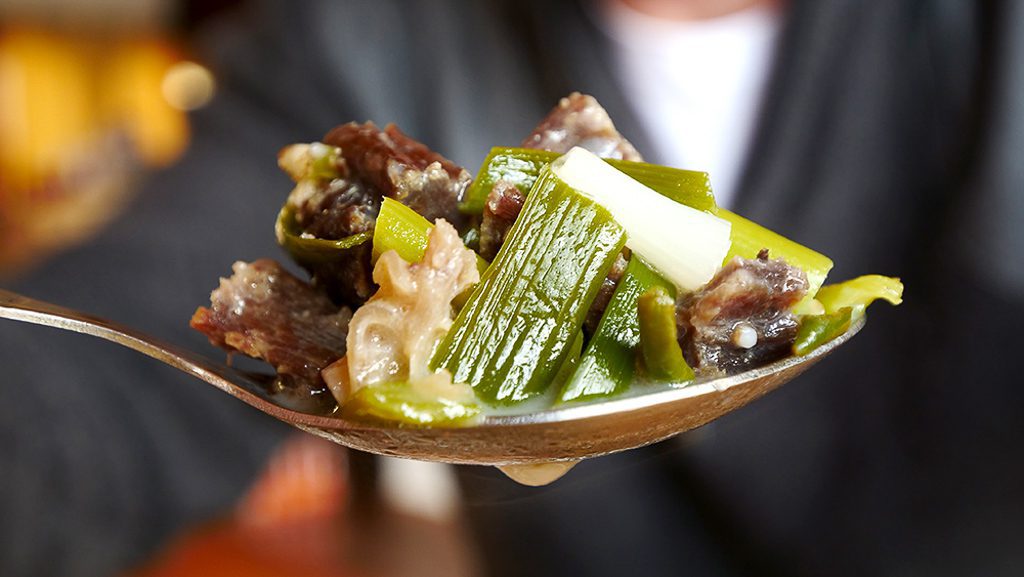
The puta contains fried chilies, an egg, pepper, salt, oil, and powdered chilies. They’re deceptively spicy, as the heat doesn’t hit you right away. It contains numbing spices that made my lips tingle!
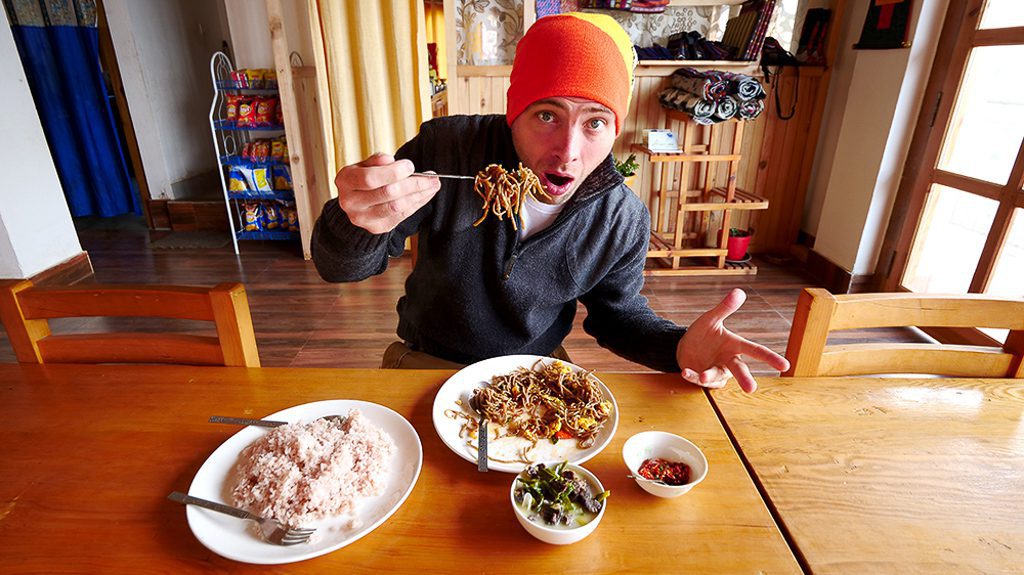
Meanwhile, the shakam dashti is served in a flavorful, spicy broth with chilies and spring onions. The dried beef absorbs much of the broth, so it’s soft, tender, and full of spice and flavor. It definitely left my mouth tingling! If you want some meat with some heat on your western Bhutan road trip, this is one of the best things to see and eat!

After a long road trip, you’ve finally arrived in Punakha, a charming town of just over 6,200 residents. This ancient city once served as Bhutan’s capital, but it was moved to Thimphu in 1955. Although your western Bhutan road trip is over, there are still plenty of things to see and eat in Punakha. I recommend starting at the most prominent landmark in town, the Punakha Dzong fortress.
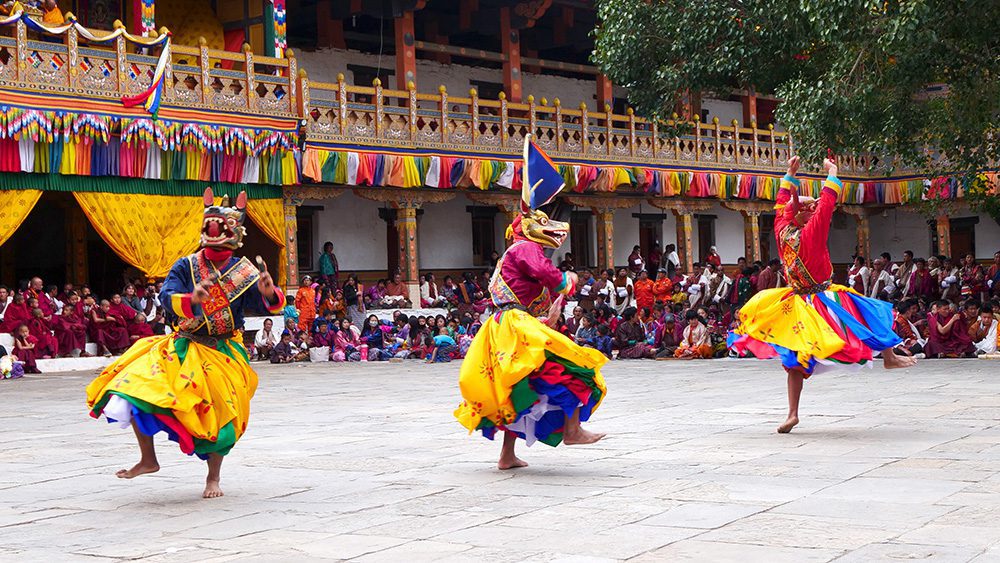
After that, work your way around the city and surrounding area, checking out sites like Khamsum Yulley Namgyal chorten, the Punakha suspension bridge, the phallus-centric village of Sopsokha, Chimi Lhakhang Monastery, and the villages of Rinchengang and Rubesia. When you get hungry, it doesn’t get any better than Chimi Lhakhang Organic Cafe, Ari Restaurant at the Drubchhu Resort, and the meals you get at the Happiness Field Village Homestay!

By the time my eight days in western Bhutan were over, I found myself wishing I could have completed all twelve days I had initially planned. I feel as though I just barely scratched the surface when it comes to Bhutan. But what I found there blew me away. I found some of the most breathtaking mountain landscapes I’ve seen in my life, some of the kindest and friendliest people, and some of the hottest food I’ve ever put in my mouth. Add in the peaceful Buddhist culture and the beautiful monasteries and I was honestly in heaven. And I think you will be, too. Book a trip to Bhutan today to begin your western Bhutan road trip and explore all the things to see and eat along the way!
Huge thanks to my friends Tsheten and Nidup from MyBhutan for showing me around their beautiful country!
NOTE: If you need to check the visa requirements of a particular country, click here. To apply for a visa, find up-to-date visa information for different countries, and calculate the cost of a particular visa, click here!
Counter
101 Countries • 1432 Cities